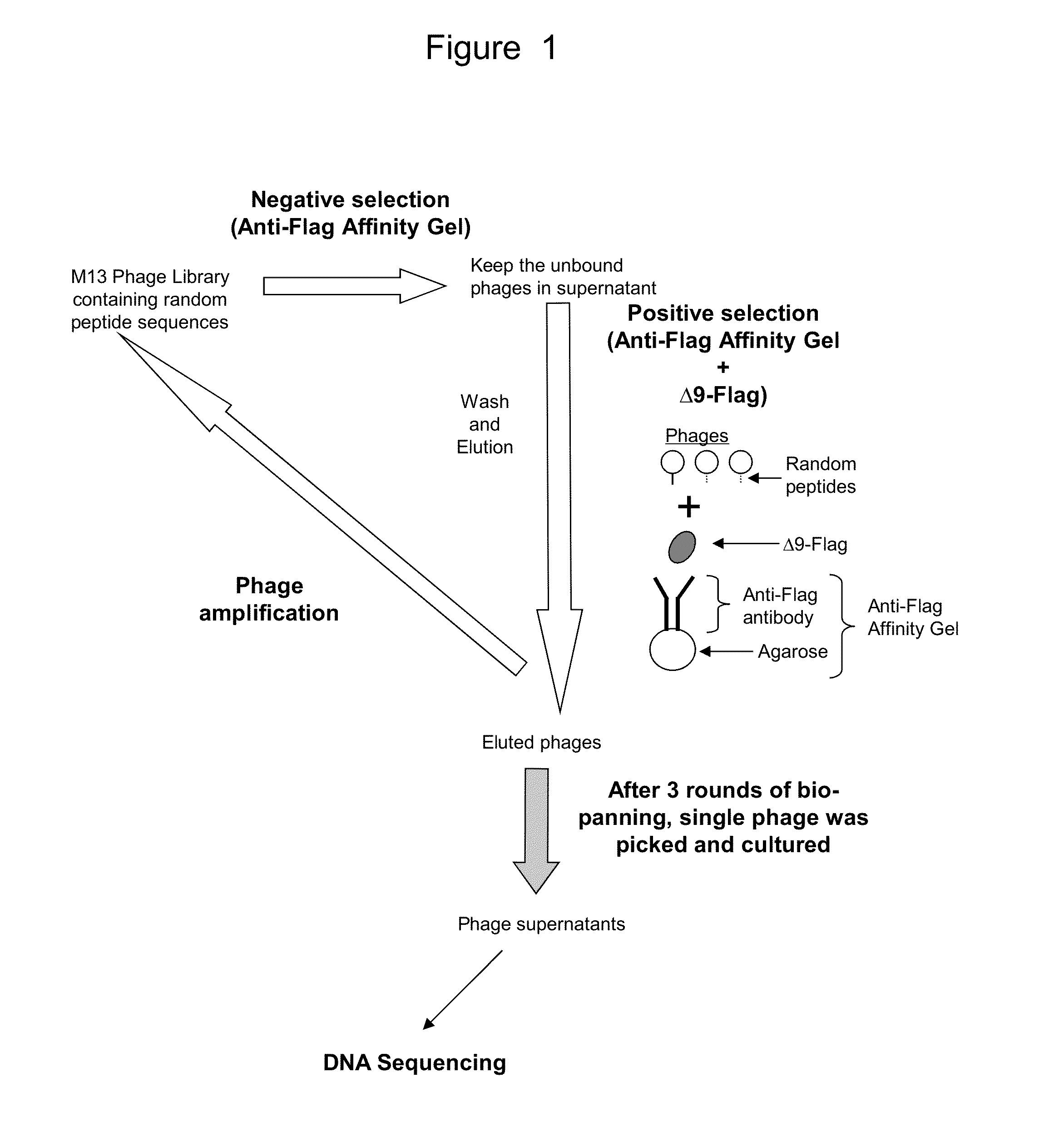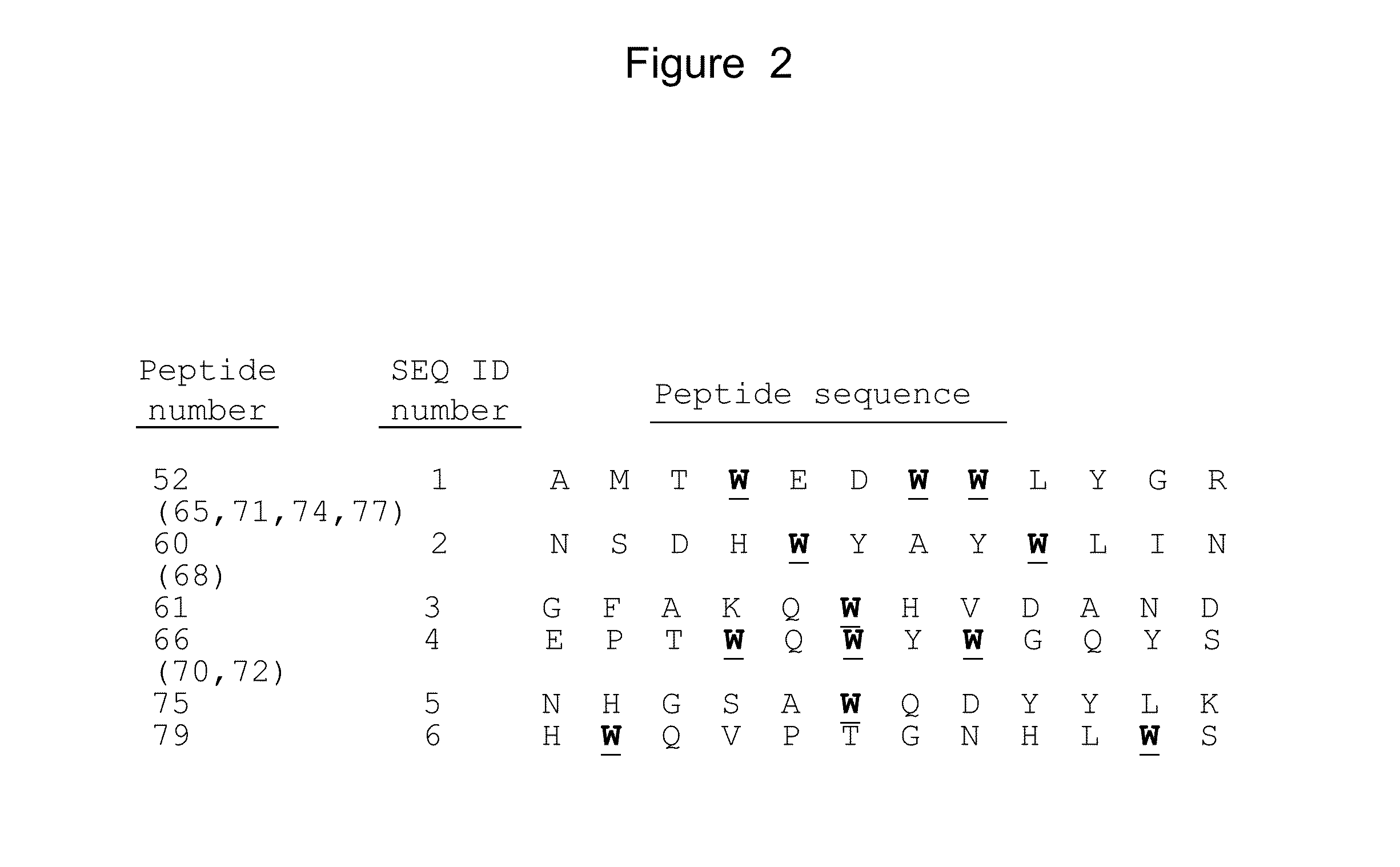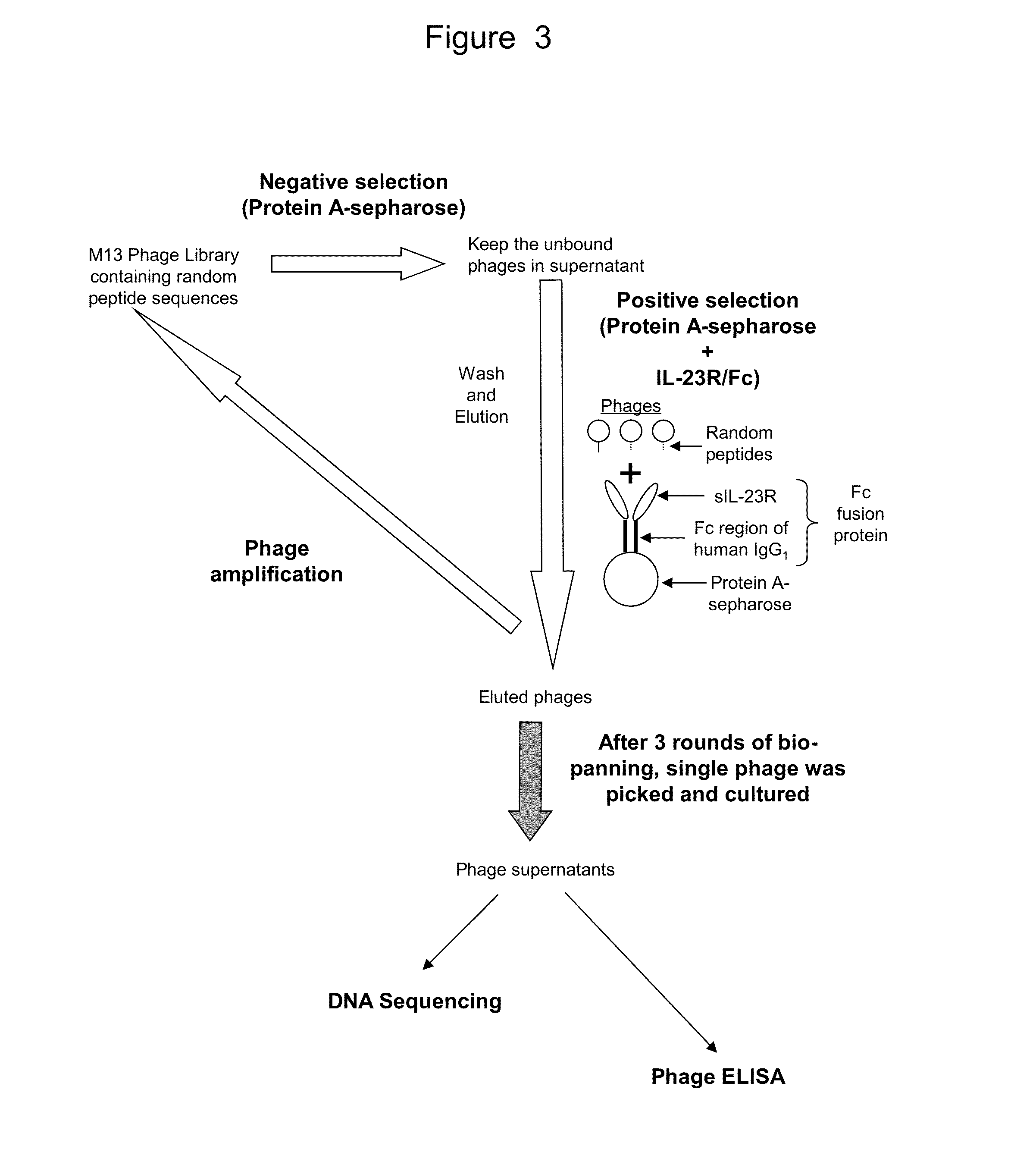Novel Polypeptides That Bound to IL-23 Receptor and Inhibit Binding of IL-23 and Cell Signaling Thereof
- Summary
- Abstract
- Description
- Claims
- Application Information
AI Technical Summary
Benefits of technology
Problems solved by technology
Method used
Image
Examples
example 1
Phage Display Screening—Identification of Novel Polypeptides that Bind to IL-23 Receptor (IL-23R)
[0209]IL-23R is composed of 629 amino acids, whose sequence (accession no. NM 144701.2) has been reported by Oppmann et al. (Immunity 13 (5), 715-725, 2000). To date, no crystallization structure has been reported for IL-23R; and its three dimensional structure remains unknown. Chemtob et al. relied on the linear amino acid sequence of IL-23R and created peptides corresponding to portions of the IL-23R. Using this rational drug design approach, these authors reported several IL-23R antagonists and an IL-23R agonist. The purported amino acid structure for the IL-23R antagonists includes LPDEVTCV, TEEEQQYL, TEEEQQYL, and MEESKQLQL. Because these synthetic polypeptides are based on the IL-23R, they were reported to act as an antagonist in blocking IL-23 binding to IL-23R and subsequent cell signaling.
[0210]In this study, we chose a different approach. Instead of a rational drug design based...
example 2
Sequencing of Phage DNA
[0239]DNA from the phages that bound to either Δ9-Flag or to IL-23R / Fc chimera was sequenced to determine the amino acid sequence of the polypeptides that bound IL-23R.
[0240]In this study, phages were precipitated from the 500 μl of supernatant obtained following the phage display assay. 200 μl of 20% PEG / 2.5 M NaCl was added to the 500 μl phage-containing supernatant (1:2.5 volume to volume ratio of PEG / NaCl to supernatant). The mixture was incubated for 20 minutes at room temperature. Phages were collected by centrifuging at 12,000 rpm for 10 minutes. The supernatant was discarded and the pellet re-suspended in 100 μl iodide buffer (10 mM Tris-HCl (pH 8.0), 1 mM EDTA, 4 M sodium iodide). 250 μl ethanol was added and the solution incubated at room temperature for 20 minutes. The solution was centrifuged at 12,000 rpm for 10 minutes. The supernatant was discarded and the pellet was washed with 0.5 ml of cold 70% ethanol. After another centrifugation at 12,000 ...
example 3
Validation of IL-23 Receptor Binding Peptides by Phage ELISA
[0250]To confirm the binding of phages isolated using IL-23R / Fc conjugated to protein A sepharose to IL-23R, we performed a phage ELISA. IL-23R / Fc was used to select peptide sequences from the phage stock obtained in our bio-panning assay. Sixteen (16) isolated phages were tested for their ability to bind IL-23R in the ELISA. Twelve (12) different polypeptide sequences were expressed on these sixteen (16) phages. Two empty phages (i.e., numbers 8 and 11) were run as controls.
[0251]FIG. 5 provides a schematic depiction of the phage ELISA. To prepare the ELISA, microtiter plates were coated with 2 μg / ml of recombinant human IL-23R / Fc and incubated overnight at 4° C. The plates were blocked for 2 hours using 10% FBS / TBST at room temperature. 10 μl of 10×PBS was added to each well. 90 μl of M13 phage-containing LB media was also added. To permit phage binding to the IL-23R, the plate was incubated overnight at 4° C.
[0252]Bound ...
PUM
 Login to View More
Login to View More Abstract
Description
Claims
Application Information
 Login to View More
Login to View More - R&D
- Intellectual Property
- Life Sciences
- Materials
- Tech Scout
- Unparalleled Data Quality
- Higher Quality Content
- 60% Fewer Hallucinations
Browse by: Latest US Patents, China's latest patents, Technical Efficacy Thesaurus, Application Domain, Technology Topic, Popular Technical Reports.
© 2025 PatSnap. All rights reserved.Legal|Privacy policy|Modern Slavery Act Transparency Statement|Sitemap|About US| Contact US: help@patsnap.com



